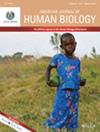High-Altitude Adaptations in Cranial and Facial Morphology Among the Native Populations of Qinghai and Pamir and Tian Shan Mountains
Abstract
Objectives
This study investigates the ecogeographic trends in the morphology of the cranial and facial skeleton of high- and mid-altitude mountainous populations of Central Asia and China and tests them against the morphological features of related low-altitude populations of the same regions.
Methods
Data on 32 cranial dimensions (9 of the cranium and 23 of the facial skeleton) was collected in a sample of 289 skulls (171 male, 118 female) from 4 high- and mid-altitude populations of Central Asia and China (236 individuals) and 3 low-altitude populations of the same regions (61 individuals).
Results
The two-way partial least square (PLS) analysis revealed a moderate level of correlation between cranial morphology and climatic conditions in samples employed, with high- and mid-altitude populations of Central Asia displaying smaller cranial dimensions, specifically cranial height, than low-altitude populations of the same regions. The analysis of the facial skeleton revealed an increase in the relative width of the nasal aperture and nasal cavity for some of the groups employed, with various degrees of correlation.
Discussion
Our results indicate the decrease in cranium size in mountainous populations of Central Asia, but not of China, which could be attributed both to the negative influence of high-altitude environments and socioeconomical influences. The increase in relative width of the nasal aperture and nasal cavity in high-altitude populations could be linked to the need for increased oxygen uptake in the low-pressure environment of high altitudes.

 求助内容:
求助内容: 应助结果提醒方式:
应助结果提醒方式:


